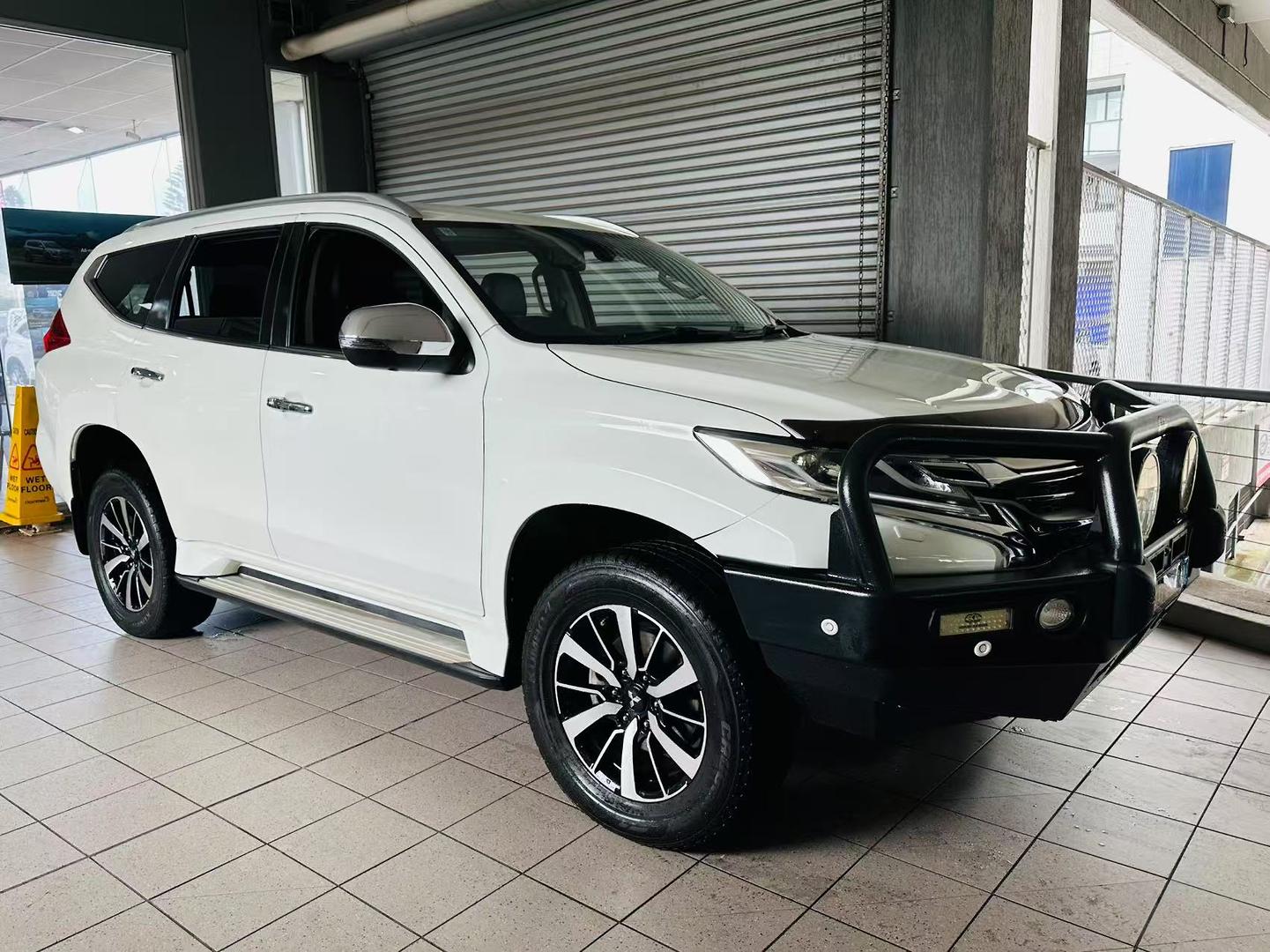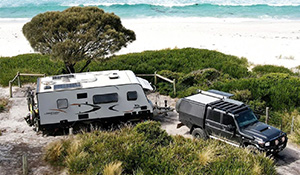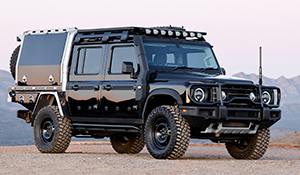1999 Ford Courier Review
New turbo-diesel
The Courier was offered with two powerplants; the established 2.6-litre petrol engine and the all-new 2.5-litre intercooled, turbo-charged diesel.
Courier's new intercooled turbo diesel was the most powerful turbo-diesel at the time, delivering 280Nm of torque at 2000rpm and 86kW of power at 3500rpm. The 2.5 litre turbo-diesel had 33 percent more power and 61 percent more torque than the previous normally-aspirated diesel engine.
It offered petrol engined performance and refinement with the traditional advantages of diesel power - economy, torque and durability.
This advanced powerplant featured an overhead camshaft, three valves per cylinder (two intake, one exhaust) and indirect fuel injection. The use of two counter-rotating balance shafts dramatically reduced vibration and improved quietness in the passenger cabin.
A small compact turbo-charger with exhaust gas, which entered diagonally, enhanced the unit's charging efficiency and reduced turbo lag. The water-cooled turbine shaft and intercooler offered durability and maintenance benefits. Substantial changes were made to engine componentry and the engine block to cope with the extra heat and load that came with turbocharging.
The Courier's petrol engine remained unchanged. The 2.6-litre petrol engine produced 92kw of power at 4600rpm and 206Nm of torque at 3500rpm.
The Courier came with a choice of two manual transmissions, depending on engine configuration. Both transmissions were upgraded, with revised linkages for smoother shifts.
An optional four-speed automatic transmission was available on some 2WD models and featured a fourth-gear lock-up function to reduce transmission power loss and improve fuel economy at cruising speeds.
An overdrive switch allowed the driver to lock-out fourth gear to prevent repeated gear-changing under heavy loads and to produce an immediate downshift from 4th to 3rd gear for highway overtaking.
The Courier 4WD also featured improved approach and departure angles to provide more protection in rough terrain.
Model range
At launch there were three body shapes available: standard cab, super cab and crew cab. Two engines were offered: the 2.6 litre petrol or 2.5l turbo-diesel. Two specification levels were also available. Standard cabs were in the GL series, targeted at hard work applications, super cabs in XL series which offer more features, and crew cabs were available in both GL and XL series.
The range included nine 2WD models. These being: Standard cab petrol (manual or automatic), standard cab turbo-diesel (manual), super cab petrol (manual), GL crew cab petrol (manual or automatic), XL crew cab petrol (manual or auto) and GL crew cab turbo-diesel (manual). There were 10 4WD models.
Suspension
Courier's front suspension was extensively revised, with new suspension geometry, revised spring rates and new damper calibrations. The vehicle's rear suspension also benefited from revised springs and dampers.
The modifications provided better ride quality and more precise steering and handling. The double wishbone front suspension used torsion bar springs and a solid stabiliser bar. The I-shaped lower arms and tension rods provided good compliance, reduced harshness and greater ride comfort.
At the rear, the leaf spring system was designed to control rear axle steer to provide more precise handling and greater straight-line stability at cruising speeds. Bias-mounted rear dampers reduced axle tramp and the sensation of "power-hopping". A limited slip differential was standard on 4X4 models and 4X2 XL series.
Styling
The new Courier featured all-new exterior body panels, a completely revised interior including a new instrument panel and new seats in a light and roomy cabin.
The styling changes to the Courier range brought the vehicle into line with Ford's global truck identity. Styling cues from the legendary F-Series establish the Courier as part of the vast Ford truck family. Rugged but contemporary, the Courier featured a bold front grille, flush front headlights, semi-concealed wiper arms, one-piece doors with a concealed drip rail and new striping and decals.
Base model GL vehicles had a dark grey grille and surround, while XL models had a silver painted grille and chrome surround. XL models had colour-keyed bumpers, while GL bumpers were grey. XLs, turbo-diesel models and four-wheel-drives also had unique stripes and decals.
Four-wheel-drive XL models vehicles were further differentiated by wheel-arch mouldings. 14 inch steel wheels were fitted to all 2WD models, while Courier 4WD GL models had standard 16-inch wheels, and 4WD XL models 15 inch styled steel wheels with wider 235 section tyres while all 2WD models were fitted with 14 inch wheels.
A new range of exterior colours was introduced on Courier. Advanced Mica paint technology was used for many of the colours, with a four-step paint process including a top coat and clear coat, providing eye-catching shades and a quality finish.
Interior
Inside, the Courier was practical, roomy and comfortable. The seats offered more support and were mounted 25mm higher for better vision and easier access. There was new trim fabrics, cupholders, more head and legroom, more storage space and a one-piece instrument panel with comprehensive, easy to read instrumentation.
Every cab configuration was redesigned to provide more width and height. All models had 17mm more front headroom and 26mm wider front seat shoulder room than the previous model.
The super cab was extended by 77mm to offer more space in the rear, with 116mm more rear leg room, 37mm more knee clearance and 15mm more shoulder room.
The main feature of the cabin was a car-like, one-piece instrument panel with comprehensive, easy-to-read instrumentation. Instrumentation included a fuel gauge, coolant temperature, speedometer, and a six-digit LCD odometer. The XL series has a separate digital clock, and all models except petrol single cab have a tachometer.
The instrument panel featured new side window demister vents and a redesigned, simple to operate air-conditioning control panel. The car-like appearance is further enhanced by a moulded roof liner and moulded upper door trims that flow into the sides of the instrument panel to give an integrated, wrap-around cabin environment.
XL models had a centre console offering a storage area, with a hinged cover and centre armrest.
Other XL extras included a passenger vanity mirror, floor carpet, tachometer and woven door inserts. All super and crew cabs also had tilt-steering, a tachometer, and rear demister, and all crew cabs have rear head rests.
Twin-cup holders were mounted in the lower instrument panel console, while the CD-compatible 25 watt AM/FM radio was mounted higher for easier operation.
For the driver, there was a soft-feel three-spoke steering wheel, with tilt steering on XLs and crew cabs.
A driver's airbag with compatible four-spoke steering wheel was optional.
Other new features included larger fuel tanks, standard limited slip differentials on 4WD models, upgraded brakes, more towing capacity and easier gear changes.












